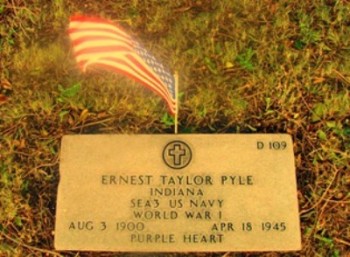
Grave site of distinguished WW II correspondent Ernie Pyle. (Credit: Cold Press Publishing, Flickr)
Sixty-five years ago this week, on April 18, 1945, iconic war correspondent Ernie Pyle was killed by Japanese machine gun fire while covering the bloody fighting on the tiny island of Ie Shima, just off Okinawa.
The Faux Pas Files yields on this occasion from pointing out how the media get things wrong to paying tribute to this correspondent who got things very right.
Pyle had covered World War II for Scripps Howard newspapers since well before Pearl Harbor, reporting from London during the Blitz. After the U.S. entered the war, Pyle covered the Allied landings in North Africa in 1942, then the conquest of Sicily in 1943, then the long, bloody campaign up the Italian peninsula, then the aftermath of D-Day in 1944 and the Allied drive across France. He eschewed covering the war from headquarters in favor of reporting it from the front lines with the ordinary dogfaces who came to respect and love him. Today, he would be called “embedded.”
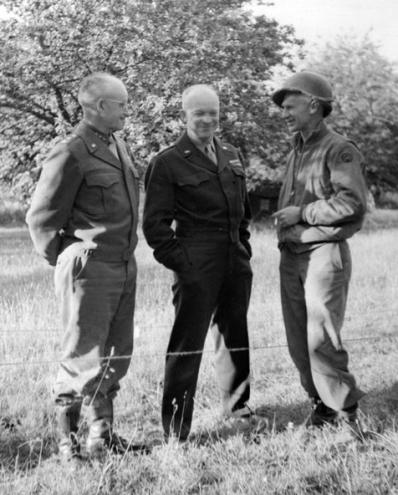
|
See this photo gallery , Gallery One, The Eastern Front is posted along with two other albums on The Indiana University School of Journalism Web site as a memorial to correspondent Ernie Pyle. Pyle is far right. Gen. Dwight Eisenhower in the middle with Gen. Omar Bradley on left. The caption states: “When Gen. Eisenhower visited the headquarters of Gen. Bradley, Pyle posed with the two.” Pyle wrote: “If I could pick any two men in the world for my father except my own dad, I would pick General Omar Bradley or General Ike Eisenhower.” (Credit: Indiana School of Journalism) |
Pyle burned out that September and came home, explaining to his devoted readers, “’I’ve had it,’ as they say in the Army . . . My spirit is wobbly and my mind is confused. The hurt has finally become too great. All of a sudden it seemed to me that if I heard one more shot or saw one more dead man, I would go off my nut. And if I had to write one more column, I’d collapse. So I’m on my way.”
Yet, after a few months of recuperation at his home in Albuquerque, he went off to war again, this time to the Pacific to cover what was thought would be a long, bloody offensive to invade and conquer Japan.
He was riding in a jeep with a battalion commander of the 77th Infantry Division when they came under machine gun fire and took cover in a ditch. Pyle raised his head to look around and was killed instantly. He was only 44, but looked much older.
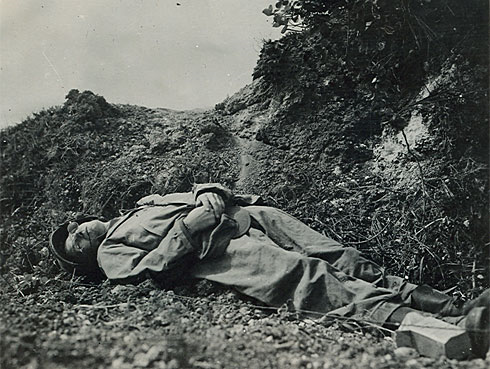
|
USA Today writes , Feb 13, 2008, “This is not just another fallen GI; it is Ernie Pyle, the most celebrated war correspondent of World War II.” The USA Today’s caption stated: “This picture of Ernie Pyle’s body, taken soon after he was killed by a Japanese bullet, was never released to the public” until 1979. Alexander Roberts, an Army photographer, “told a friend of Pyle’s that the War Department withheld it ‘out of deference’ to Pyle’s ailing widow, Jerry.” (Credit: USA Today) |
Pyle, a journalism student but never graduate of Indiana University, was more than just one of hundreds of war correspondents; he was a genuine chronicler of World War II, providing readers on the home front with a soldier’s-eye view of the war rather than merely with the inspiring quotes of rear-echelon generals. His simple, homespun, often evocative style made him a legend among journalists and earned him a Pulitzer Prize in 1944.
His readers, both military and civilian, loved him, and his death stunned a nation still grieving from the death of President Franklin D. Roosevelt just six days before. President Harry S. Truman paid a moving tribute to Pyle and his reporting, and Pyle was the first civilian buried in the Punchbowl Crater National Cemetery in Hawaii (although he qualified for burial there because of service in the Naval Reserve in World War I). The Media Center at Fort Jackson, S.C. is named in his honor, and there is an Ernie Pyle Road at Fort Meade, Md.
Ernie Pyle was still a household name when I was a kid, and I wrote a term paper on him in my journalism history class at TCU. Alas, the memory of Ernie Pyle is fading; on Jan. 1, the state of Indiana closed the Ernie Pyle State Historic Site, the home in Dana where he was born, because of falling attendance. The artifacts were to be transferred to the Indiana State Museum. Sadly, I have encountered pitifully few journalism students who recognize his name. I make it my business to educate them—and now you—about one of the best writers of non-fiction prose this country has ever produced.
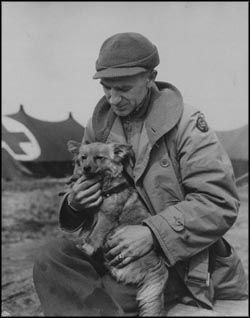 The Indiana University School of Journalism Web site states: “Ernie Pyle died on the Pacific island of Ie Shima on April 18, 1945. A sniper fired at his jeep and Pyle took cover in a ditch. He raised his head to look for one of the soldiers who was with him and was killed instantly. ” (Credit: Indiana University School of Journalism) |

In the WW II wartime era, Pyle was a “household name” and his loss was felt by both soldiers and civilians. (Credit: Mark Sardella, Flickr)
Pyle’s dispatches were compiled into five books: Ernie Pyle in England (1941), Here Is Your War (1943), Brave Men (1944), Last Chapter (1946), and Home Country (1947). They are still recommended reading for anyone aspiring to be better than a mediocre writer.
But of the hundreds of dispatches Pyle hammered out on a typewriter at the front, often by lantern or candlelight in a tent or cowshed, perhaps none had the impact of his poignant, 800-word account of the death of Capt. Henry T. Waskow, a Texas National Guard officer, in Italy in 1944. Pyle’s description of the impact of Waskow’s death on his men was so compelling that the Scripps Howard paper in Pittsburgh ran a teaser on the front page to the story on the front page of its second section, complete with its GI profanity that is rare even in today’s daily newspapers, in its Jan. 10, 1944 edition. Waskow’s death was also featured in the 1945 movie The Story of G.I. Joe, in which Burgess Meredith played Pyle and a young Robert Mitchum played Waskow.
I make a point of reading this dispatch to my feature writing classes every year as an example of compelling descriptive writing. The first time I tried to read it, I had to stop and compose myself. It’s that powerful.
Don’t take my word for it; read it for yourselves:
|
“Roving Reporter” column by Ernie Pyle
In this war I have known a lot of officers who were loved and respected by the soldiers under them. But never have I crossed the trail of any man as beloved as Capt. Henry T. Waskow of Belton, Texas. Capt. Waskow was a company commander in the 36th Division. He had led his company since long before it left the States. He was very young, only in his middle-20s, but he carried in him a sincerity and a gentleness that made people want to be guided by him.
I was at the foot of the mule trail the night they brought Capt. Waskow down. The moon was full, and you could see far up the trail, and even partway across the valley below. Dead men had been coming down the mountain all evening, lashed onto the backs of mules. They came lying belly-down across the wooden pack-saddles, their heads hanging down on one side, their stiffened legs sticking awkwardly from the other, bobbing up and down as the mules walked. The Italian muleskinners were afraid to walk beside the dead men, so Americans had to lead the mules down that night. Even the Americans were reluctant to unlash and lift off the bodies when they got to the bottom, so an officer had to do it himself and ask others to help. I don’t know who the first one was. You feel small in the presence of dead men, and you don’t ask silly questions. They slid him down from the mule and stood him on his feet for a moment. In the half-light he might have been merely a sick man standing there leaning on the others. Then they laid him on the ground in the shadow of the low stone wall beside the road. We left him there beside the road, that first one, and we all went back into the cowshed and sat on water cans or lay on the straw, waiting for the next batch of mules. Somebody said the dead soldier had been dead for four days, and then nobody said anything more about it. We talked soldier talk for an hour or more, the dead man all alone, outside in the shadow of the wall. Then a soldier came into the cowshed and said there were some more bodies outside. We went out into the road. Four mules stood there in the moonlight, in the road where the trail came down off the mountain. The soldiers who led them stood there waiting.
Two men unlashed his body from the mule and lifted it off and laid it in the shadow beside the stone wall. Other men took the other bodies off. Finally, there were five lying end to end in a long row. You don’t cover up dead bodies in combat zones. They just lie there in the shadows until someone comes after them. The urburdened mules moved off to their olive grove. The men in the road seemed reluctant to leave. They stood around, and gradually I could sense them moving, one by one, close to Capt. Waskow’s body. Not so much to look, I think, as to say something in finality to him, and to themselves. I stood close by and I could hear.
Another one came, and he said. “Goddamn it to hell anyway!” He looked down for a few last moments and then turned and left. Another man came. I think he was an officer. It was hard to tell officers from men in the dim light, for everyone was bearded and grimy. The man looked down into the dead captain’s face and then spoke directly to him, as though he were alive: “I’m sorry, old man.” Then a soldier came and stood beside the officer and bent over, and he spoke to his dead captain, not in a whisper, but awfully tenderly, and he said, “I sure am sorry, sir.” Then the first man squatted down, and he reached down and took the dead captain’s hand, and he sat there for a full five minutes holding the dead hand in his own and looking intently into the dead face. And he never uttered a sound all the time he sat there. Finally, he put the hand down. He reached over and gently straightened the points of the captain’s shirt collar, and then he sort of rearranged the tattered edges of the uniform around the wound, and then he got up and walked down the road in the moonlight, all alone. The rest of us went back into the cowshed, leaving five dead men lying in a line, end to end, in the shadow of the low stone wall. We lay down on the straw in the cowshed, and pretty soon we were all asleep.
Reprinted here through the generous permission of Scripps Howard newspapers
|
The next time you hear someone say journalists have no business being on the front lines, show them this dispatch.
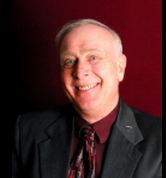 |
ROBERT BUCKMAN, Ph.D., is an associate professor of communication and head of the print journalism sequence at the University of Louisiana at Lafayette. He is a member of both the Ethics Committee and the International Journalism Committee of the Society of Professional Journalists. He is the author of a reference book on Latin America and a regular freelance contributor to newspapers on Latin American politics. |





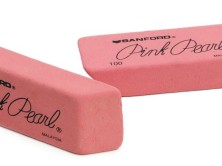
May 19th, 2011 Punchbowl cemetery Oahu Hawaii. We came across Ernie Pyle’s grave marker on the side of the main road. Stopping and paying our respects images of the war and of Ernie I have seen flooded into my mind. A tear slowly rolled down my cheek.